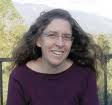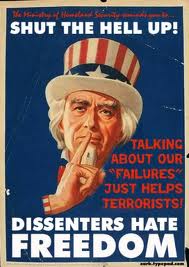After reading The Union of Their Dreams, Miriam Pawel’s fine account of the rise and fall of the United Farm Workers Union (UFW), I re-read an article I wrote for the Nation magazine in November 1977. In this essay, “A Union is Not a Movement,” I leveled some harsh criticisms at the union and its famous leader, Cesar Chavez. In response, the union’s chief counsel, Jerry Cohen, one of the major characters in Pawel’s book, threatened suit against the magazine. At the time I was upset, thinking that maybe I should have been more careful in what I had said. However, as The Union of Their Dreams makes clear, I need not have been, since everything I said was true. And then some.

Nearly every book written about the UFW has placed Cesar Chavez front and center, and most of them have portrayed him as a cross between Gandhi and Jesus Christ. Chavez appeared on the scene, and everything changed. He did what no one had ever managed: the building of a strong union of the poorest of the poor—migrant farm workers. Pawel’s book has the great virtue of not making Chavez its main protagonist. Instead, she uses to excellent effect the journalistic technique of telling the story of the UFW through the eyes of several key participants in the struggle to build the union, none of them Chavez. He is, as he must be, always present in the book, but by focusing on the lives and actions of others, Pawel both demythologizes Cesar and shows that he was, himself, but one of many talented and dedicated people who made UFW history.
The books’ eight protagonists are Eliseo Medina, the Mexican-born farm worker who became a brilliant organizer and all-round union mastermind; Chris Hartmire, Chavez stalwart, protestant minister, and head of the California Migrant Ministry, which he converted into an arm of the UFW; Ellen Eggers, who joined the union boycott crusade, became a UFW attorney, and later an advocate for death row inmates; Gretchen Laue, who joined the boycott in Boston more or less by accident and went on to become a union organizer; the aforementioned Jerry Cohen, who, while learning on the fly, became one of the best labor lawyers in the United States, developing the many innovative legal tactics that helped build the UFW; Sandy Nathan, Cohen’s right-hand man and an innovative lawyer and negotiator in his own right; and rank-and-file farm workers Sabino Lopez and Mario Bustamante, whose rise and fall inside the UFW illustrate as well as anything the mixed legacy of Cesar Chavez.
Pawel conducted extensive interviews with these eight key sources, and with many others as well, and she uses their words and considerable research in both primary and secondary sources (“letters, memoranda, notes, court files, newspaper stories, and diaries written at the time,” as well as “six hundred hours of tapes of meetings, rallies, and interviews recorded between 1969 and 1980.”), to weave an exciting and original investigation into the spectacular growth and inglorious collapse of the union that was once the hope of the U.S. labor movement and which provided a formative experience for thousands of workers and hundred of volunteers. I speak from experience. I worked for the UFW in the winter and spring of 1977, and I was profoundly influenced by what I witnessed there and the people whom I met.
What is most important about this book is that it puts people integral to the union’s historical trajectory on record, so that what they tell us can be compared to what has been the main record so far, that of Cesar Chavez. Instead of hearing only from him and those who have remained uncritically loyal to him, like the famed Dolores Huerta, longtime Chavez secretary Mark Grossman, and current union president and Cesar’s son-in-law Arturo Rodriguez, we listen to the voices of men and women who have complex, nuanced views of the union and Chavez’s role in it. This allows us to gain a more complete and accurate picture of the UFW, and, whether or not Pawel intended this, it also gives plenty of ammunition to those of us whose attitude toward Chavez is on balance negative.
The first part of the book vividly captures the remarkable and exciting story of the rise of the UFW, from its beginnings in grape strikes, nationwide boycotts, the activation of thousands of idealistic and fanatical lay and religious volunteers, the sweetheart contracts signed by the growers with the Teamsters, beatings, jailings, Cesar’s fasts and marches, and the recruitment and amazing development of one of the best labor legal staffs in the country, to the passage of the California Agricultural Labor Relations Act in 1975, the most protective labor law for farm workers in the country. This section of the book brought back the excitement and moral certitude I felt when I first learned of and began to participate in the farm workers’ struggle for justice in the fields. The impact of the UFW’s epic efforts on so many of us is captured by Pawel when she writes of the young Eliseo Medina when, in the midst of the first grape strike in 1965, he joins the union:
The shy teenager from Zacatecas with a shock of dark hair tended to deliberate carefully before acting. Once he made a decision, Eliseo embraced the path with focused enthusiasm and a big, contagious grin. He went home after the meeting at the church and cracked open his piggy bank. He didn’t know what a contract was, but he counted out ten dollars and fifty cents. The next day, he drove to the headquarters at 102 Albany Street, handed three months dues to Helen Chavez, and joined her husband’s union.
And Ellen Eggers, a few years later, when she decides to commit herself to the union:
Ellen called her mother and sobbed as she explained the importance of the union’s struggle and why she had to stay. Ten years from now, she reasoned, she would not remember whether she went back to see her nephew and her boyfriend. But she would always remember if she left when the movement needed her to stay.
In the early chapters, Pawel throws out hints of the troubles to come, and she doesn’t hesitate to suggest that these were rooted in the personality and politics of Cesar Chavez. There are signs that Chavez would brook no opposition, that he was often petty and vindictive, and that he did not believe the words of Eugene Debs: “I do not want to rise above the working class; I want to rise with them.” Chavez’s attitude toward the workers he was leading is reflected in a famous statement he made and which has been quoted many time, almost always with approval: “I am convinced that the truest act of courage, the strongest act of humanness, is to sacrifice ourselves for others in a totally non-violent struggle for justice. To be truly alive is to suffer for others. God help us to be truly alive!” He would suffer for the farm workers, and by doing this he would be alive. But what would happen if the workers saw things differently, if they wanted not a Christ figure for their leader, but instead wanted to lead the union themselves, and if, rather than eternally suffering, they wanted better lives, here and now? Once in a community meeting at La Paz, the union’s headquarters in the desert mountains east of Bakersfield, California (a place that was, not coincidentally, far removed from where most farm laborers lived and worked), Chavez told us that a union supporter wanted to donate some washing machines for use by the union volunteers living there. Cesar said that he wasn’t sure he should accept the gift, because we probably wouldn’t take care of them. We protested vigorously, telling him that people had to find a way up the mountain to Techachapi to do laundry and that many volunteers didn’t have money for this. Cesar scoffed and said this was all “chickenshit,” and that he didn’t do his own laundry anyway so he didn’t care. This led to a loud chorus of booing for such a sexist remark. He responded with narrowed eyes and said, “I work eighteen fucking hours a day for the union. Which of you can say the same?” He loved playing the martyr, and he used this to gain and keep power. Not that he didn’t really suffer, with his numerous fasts and forced marches. But Jesus’s suffering ended in death. Cesar kept living and could use his suffering over and over again to silence his critics.
The tone changes dramatically in the second part of the book. While the new labor law was slow to get off the ground, eventually it worked to the UFW’s advantage, and the union soon had thousands of new members and had pretty much succeeded in driving the Teamsters from the fields. When the growers were able to stall legislative funding for administration of the law by the Agricultural Labor Relations Board, Chavez decided to organize a massive campaign to put a ballot initiative before voters that would make funding part of the state’s constitution. Money would then never again be subject to the vagaries of Sacramento politics. Unfortunately, the UFW campaign was badly flawed, and it was easily defeated. Pawel suggests and her sources imply that the union would have been better served by devoting its time and resources to winning union representation elections and securing collective bargaining agreements. Behind the scenes, however, Chavez apparently had other fish to fry.
Most accounts of UFW history speculate that something happened to Chavez after the lost initiative, and he somehow went off the deep end. Certainly bizarre and ugly things began to happen. He hatched a scheme with Chris Hartmire to begin a new religious order, whose farm worker and volunteer initiates would live by communal farming. He deepened his friendship with Charles Dederich, who had made his once successful drug rehabilitation organization, Synanon, into a cult. “Dederich employed a technique he called “The Game” to break down the addicts’ fragile personalities so that they could be more accessible to the forces of social control, and–in particular–his control.” Chavez began taking his inner circle to Synanon for training, and then he made The Game a centerpiece of union activities. Right after the lost initiative campaign, Chavez had begun to purge some key personnel, charging them with disloyalty, complicity with the growers, and communism. Then at an infamous community meeting at La Paz, Game participants led a frenzied attack on several volunteers, who were summarily kicked out of the union. During this “Monday Night Massacre,” one volunteer protested vigorously, and the union called the police and had him arrested and forcibly removed from the property. Several resignations followed (a year and a half later, Eliseo Medina, the one person who might have challenged Chavez’s leadership, left the union). From this point on, The Game would be a major weapon Chavez and his loyalists would use to consolidate power.
Most of the union’s staff remained loyal to Chavez, and most participated in The Game despite misgivings. They failed to see what was happening or did not care, believing that the cause was more important that the purges or that Chavez had inside information and those forced out of the union deserved it. Some actively participated in the carnage, while others felt that as long as the purges did not interfere with what they were doing, they did not matter. Nearly all of them would suffer the same fate as those who resigned or were kicked out of the union in what Chris Hartmire called Cesar’s “cultural revolution.”
The next few years saw the union becoming more and more dysfunctional, as Chavez balked repeatedly at any efforts to build a real union. On the surface, there were skirmishes between Chavez and staffers. Chavez and Medina. Chavez and Marshall Ganz, perhaps the union’s best organizer. Chavez and Gilbert Padilla, one of the union’s founders and with Chavez from the beginning. Chavez and Jerry Cohen and the legal staff. Chavez and Filipino farm worker leader, Philip Vera Cruz. There were various bones of contention: The Game, the fact that the attorneys (and a couple of doctors) received salaries and no one else did, Cesar’s insistence that everyone live at La Paz, the disorganization of the union and Chavez’s use of various management “gurus” to put the union house in order, Chavez’s insane nitpicking over the spending of small sums of money, his refusal to allow negotiators to sign off on collective bargaining agreements, his disinterest in the nuts and bolts of a labor union and his drifting from one idealistic movement-building scheme to another, his constant threats to resign if he didn’t get his way. Beneath the surface, however, was buried the root difficulty. Chavez could not abide the idea, much less the reality, that the farm workers, themselves, could and should run the union.
Pawel unearths plenty of evidence of Chavez’s disdain, distrust, even dislike of the rank-and-file for whom he had presumably built his movement. In many unions, talented workers get elected to local union office, and from there, they can actively participate in national union affairs and sometimes get elected or appointed to higher union office. This was impossible in the UFW, because there were never any local unions. Chavez made all appointments to the staff and tightly controlled who sat on the UFW board. The union’s constitution gave staff persons due process rights, but Chavez always ignored these. Few staffers were former farm workers; most were Anglos, including the attorneys. I believe that this was intentional. It prevented the formation of power bases that might challenge Chavez. The only Anglo who might have successfully challenged Chavez was Marshall Ganz, and he chose not to do so, at least not openly.
Chavez regularly told farm worker leaders one thing and staff and the board another. With the union on the verge of power in the fields in late 1976, Medina and others were excited about newly-formed ranch committees of workers who they hoped would eventually become the centers of the union. Chavez always gave lip service to worker empowerment, but when push came to shove, he backed away. At a conference Medina could not attend,
Chavez said, “The newer they are in terms of immigrants the more money means to them.” They didn’t understand sacrifice, he argued, and they would have to be educated before they could assume power. Pawel tells us that these comments were edited out of the conference minutes, as were these telling words: “You don’t want farm workers managing the union right now. With the attitude they have on money, it would be a total god damn disaster, it would be chaotic. Unless they’re taught the other life, it wouldn’t work.” During the purges in 1977, Chavez said about his members, “Every time we look at them, they want more money. Like pigs, you know. Here we’re slaving, and we’re starving and the goddam workers don’t give a shit about anything because we don’t train them, you know, we don’t teach them anything.” Or tell them anything either. They knew nothing about The Game or the internal struggles in their own union.
Perhaps nothing illustrates the disdain Chavez and his closest allies felt toward farm workers than an event at La Paz in 1979, where volunteers were teaching English to farm workers. Ironically the legal staff and the workers were celebrating major victories in the lettuce strikes. Chavez had been invited to join the festivities, but he stayed at La Paz. Here is how Pawel describes what happened:
A few days later, a different celebration took place at La Paz. Farmworkers graduated from an English class. . . . The proud students put on a slide show for their families, the La Paz community, and most of the union officers. The slides ended with a familiar refrain, the same message that Eliseo had delivered at a boycott conference in almost the same spot less than eight years earlier: The union is not Cesar Chavez. The union is not La Paz. The union is the workers.
Graduates and guests, board members and union leaders trooped down to the communal kitchen for a celebratory lunch. They had barely sat down when Delores Huerta rose and began to grill the teachers. She demanded to know who had suggested such subversive thoughts. Someone must have put the workers up to voicing such disloyalty, and she wanted a confession. The meal ended before it had begun. Two teachers were fired later that day.
The union is the workers had been their campaign slogan, the essence of the UFW’s appeal as the union waged war against the Teamsters and piled up election victories. But that was four years earlier and another era. The union was Cesar Chavez, and to suggest otherwise was treason.
When I read this, I thought that the many groups that have honored Huerta should be ashamed.
Despite myriad problems, the UFW continued to organize, to get contracts, to win legal victories, and to strike. Then, at the end of 1978, events commenced that finally destroyed the union. They brought into the open Chavez’s refusal to countenance worker control of the union. Thirty collective bargaining agreements expired, most of them involving lettuce companies, the heart and soul of California agriculture. Union farm worker leaders from the various ranches came to La Paz to plot strategy for what promised to be an epic struggle to negotiate new contracts. Ten workers were elected to a negotiating committee, which would bargain with all of the companies as a group. Ultimately a strike vote was called and a strike fund authorized. The great lettuce strike began on January 19, 1979. It spread and stopped production. However, Chavez sabotaged it every step of the way. He accused Ganz of inciting violence. He finally dismantled the legal department. When the strikers began to build power among themselves and could have expanded the strike and achieved stunning victories, Chavez said that the strike couldn’t be won and that only a boycott could succeed. When Jerry Cohen finally won contracts from many of the growers, the direct result of the strike and the newly develop worker power, Chavez sulked in La Paz.
The new agreements provided for company-paid ranch union representatives—like shop stewards in a local union of factory workers. These paid union reps were a credible threat to Chavez’s power, and while he again praised the development of workers poised to run the union, he plotted to destroy them. The final fifty pages of the book make for depressing reading. Chavez used every dirty trick in the book to defeat the worker leaders. He slandered them. He sent goons, including his criminal cousin, Manuel Chavez, to threaten them and beat them. The union may even have engineered the automobile accident of farm worker leader Cleofas Guzman, a wreck that left him paralyzed. He wrote new rules for the union convention when it appeared that a worker-dominated slate opposed to him might win seats on the board. He fired the paid reps who threatened him, including Mario Bustamante and Sabino Lopez, and had these two challengers drummed out of the union. His goons picketing places where Sabino and Mario got employment.
A look at the UFW today gives us a good picture of the legacy of Cesar Chavez. Before writing her book, Miriam Pawel wrote an exceptional series of articles for the Los Angeles Times that exposed the union as not only irrelevant to the lives of farm workers, a mere handful of whom are still members, but as what might charitably be called a quasi-racket. She discusses this in the book, but the Times essays give more detail. The union is now run by Cesar’s son-in-law, Arturo Rodriquez, who comes in for some rough treatment by Pawel’s informants, including Eliseo Medina. Perhaps the word that best describes him is incompetent; certainly he has shown none of the abilities of any of the great UFW organizers. He does appear to have a talent for overseeing, along with Cesar’s son Paul and other family members and assorted scoundrels, an empire—begun by Chavez himself—of housing developments, radio stations, consulting enterprises, mass-mailing fund-raising campaigns, and marketing schemes (UFW paraphernalia, Chavez mementos, and the like). Meanwhile pensions and health funds are awash in cash, but precious few workers get any benefits. In a labor movement notorious for corruption and shortchanging the membership, the United Farm Workers has secured a place on the union wall of infamy.
Miriam Pawel does not claim that The Union of Their Dreams is a definitive account of the United Farm Workers union. We do not get much insight into the formation of Chavez’s personality and world view. We do not learn enough about the history of the farm worker labor movement. Filipino workers played a key role here, and Chavez’s complex relationships with them gets little attention, even though it could be argued that he usurped the nascent union they had built. The roles of clergy, Saul Alinsky, the AFL-CIO, the left-led unions, anti-communism, and much else do not get sufficient attention. I believe that when scholars really dig into all of this, they are going to find that there is more continuity in Chavez’s history and philosophy than previously understood and that his conception of building a movement in a modern capitalist society was remarkably flawed.
But as Pawel herself says, many more books will have to be written before the whole story has been told. Luckily for us, she has shown the way. This is the most honest book yet written about the UFW. For anyone interested in this iconic union, this is indispensable reading.
This review first appeared in the May 2010 issue of Monthly Review.







I had read this review in MR a few weeks ago. As usual, well written. It always feels good to know that you were right all along.